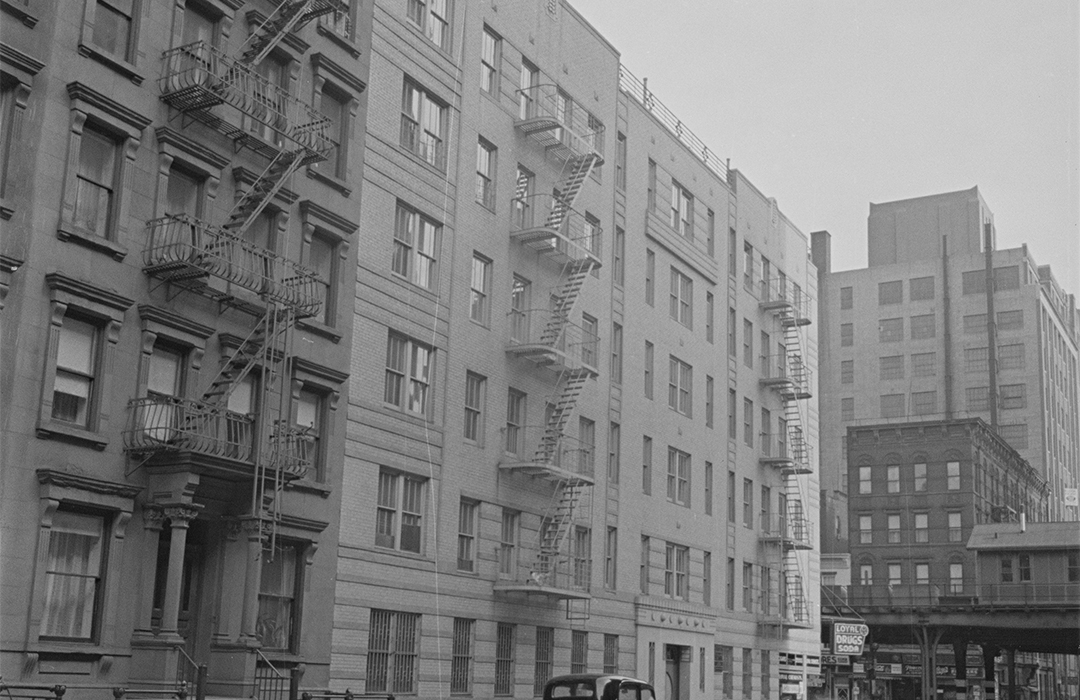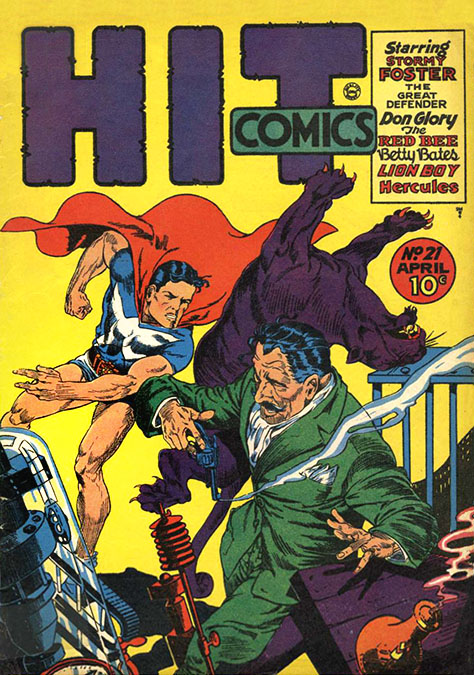
101 West 60th Street aka 20-24 Columbus Ave.
by Tom Miller
Hyman Isaac Feldman, who went professionally by his initials, was just four years old when his family immigrated to New York City. He opened his own architectural office in 1921, specializing in apartment houses. By the time of his death in 1981, he had designed 2,500 such buildings in the New York metropolitan area.
In 1938, despite the ongoing Depression, Gomatel Realty & Construction laid plans to replace the old tenement buildings at the northwest corner of Columbus Avenue and 60th Street with a modern apartment house. The firm commissioned the 42-year-old Feldman to design the structure.
Simultaneously, Feldman took on two other commissions from the Seventh Chelsea Corp. Known for his clean Art Deco designs, Feldman designed 101 West 60th Street, 219 West 25th Street, and 210 West 19th Street as near carbon-copies of one another. All three structures would be six stories tall and flex bold Art Deco elements—such as the projecting brick courses that produced a modern, linear effect and faceted bosses set into the brickwork. The entrance to 101 West 60th Street was a near copy of that at 219 West 19th Street. Its hefty stone enframement was punctured by thin, lancet-like openings. The entablature featured a jovial row of alternating half-spheres and flat discs.
Among the residents in 1942 were Maxwell Charles Elkan and his wife, the former Vivian Schwartz.
There were seven stores along the Columbus Avenue side of 101 West 60th Street. The apartments ranged from studios to four rooms, with dropped living rooms, “fully tiled showers,’ and “a modern impressive lobby.”
Among the residents in 1942 were Maxwell Charles Elkan and his wife, the former Vivian Schwartz. The couple was married in 1939. Born Maxim Katz in New York City on June 5, 1918, Elkan changed his name when he embarked on a commercial art career. He would have a successful career illustrating pulp novels, comic books, and magazine stories.
Living here at the time was Alice Markert, who found herself on the U.S. Government’s radar. In 1942, she was listed by the Committee on Un-American Activities for being a member of the Communist Party.
Roberta Blatt Felsen was left alone here when her husband Milton left to fight in World War II. The couple had just been married, on July 18, 1941. On April 5, 1943, she received a telegram from Washington D.C. that read, “The Secretary of War expresses his deep regret that your husband Sergeant Milton Felsen has this date been reported missing in action in North African Area since February 24. Additional information will be sent you when received.” Five days later, a second telegram arrived. “Your husband Sergeant Milton Felson [is] reported a prisoner of war of the Italian Government.”
Felsen was turned over to the Germans. On May 23, 1945, the Brooklyn Eagle reported on a meeting Senator Alben W. Barkley and publisher Joseph Pulitzer had had with two war prisoners who described the Nazis torture of prisoners. “They were Sgt. Milton Felsen, Brooklyn-born paratrooper, who escaped after almost two years in German hospitals and prison camps, and a Dutch woman…who spent a year in a concentration camp.” Felsen described the prison camps as “wholesale murder factories.”
“Your husband Sergeant Milton Felson [is] reported a prisoner of war of the Italian Government.”
As had been the case with Alice Markert, in 1948, three residents were on the government’s watch list—Vera Groden, Minnie Bunin, and Roberta Felsen. Roberta (who was an editorial assistant for The Telegraph Agency of the U.S.S.R., or Tass) was called to testify before the special subcommittee of the House of Representatives investigating Communism in New York City Distributive Trades. Her testimony was not very fruitful. Roberta’s answers were most often, “I do not think I can answer that question,” or, “I don’t think that that is a proper question of me.”
The Felsons lived at 101 West 60th Street into the mid-1950s. Milton Felson documented his experiences in his 1989 autobiography, The Anti-Warrior. He worked for film-related labor unions before running the East Coast office of the Directors Guild of America starting in 1960. He was associate producer of Saturday Night Fever and produced films like The Bell Jar and The Directors.
H. I. Feldman’s Depression Era building was home to middle-class residents for the next three decades, never declining or suffering neglect. It was razed in 1985 to make way for the Fordham University Campus.
Tom Miller is a social historian and blogger at daytoninmanhattan.blogspot.com



